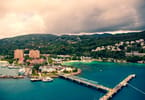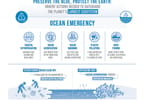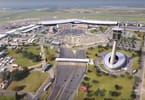TAMPA, Florida – The path of Tropical Storm Isaac is sending chills throughout New Orleans and the Gulf Coast, as its path appears to be taking on the same route of Hurricane Katrina in 2005.
Louisiana, Alabama, and Mississippi are all implementing emergency management plans, with thousands leaving their Gulf Coast homes under mandatory evacuation. The governors of the three states each declared an emergency, with Alabama Gov. Robert Bentley ordering mandatory evacuations for residents who live along the coast and for those in some low-lying areas inland.
Some 9,000 residents in Jefferson Parish, Louisiana, were ordered to evacuate Monday morning. The towns of Jean Lafitte, Crown Point and Barataria are affected. “We’re worried about tidal surge,” Jean Lafitte Mayor Tim Kerner said.
Louisiana Gov. Bobby Jindal called on residents in coastal parishes prone to flooding to voluntarily evacuate. A mandatory evacuation was ordered for St. Charles Parish and for parts of Plaquemines Parish.
On Monday morning Isaac was centered about 310 miles southeast of the mouth of the Mississippi River. It was forecast to become a hurricane “in a day or so,” the National Hurricane Center said.
A hurricane warning was in place Monday for the northern coast of the Gulf of Mexico, from Morgan City, Louisiana, east to Destin, Florida. A landfall on Wednesday would coincide with the seventh anniversary of the arrival of the much stronger Hurricane Katrina.
Mississippi officials dispatched 1,500 National Guard troops to the state’s three southern counties to help with emergency operations, as well as 45 state troopers to ease traffic flow. The state has distributed 10,000 sandbags to residents ahead of the storm.
“In short, we have done everything in our power to be prepared for the storm,” Mississippi Gov. Phil Bryant said.
Alabama authorities warned residents Monday that strong winds and high water may affect the state’s coast even if the storm hits as far west as Louisiana.
“It is a very large storm,” Alabama Emergency Management Agency Director Art Faulkner said, “And oftentimes we confuse and focus on a specific dot that may be identified as the center of the storm when very dangerous conditions may exist as far as 200 miles from that specific dot.”
Isaac’s strength was holding steady Monday as it moved at 14 mph through the warm Gulf waters, forecasters said. The storm had maximum sustained winds of 65 mph, according to a hurricane center advisory.
In the coastal Mississippi city of Pass Christian, people were moving their boats to higher ground and preparing their homes.
It appeared Monday that the storm’s ferocity would mostly bypass Florida’s west coast and the Republican National Convention in Tampa, where the schedule was pushed back a day by organizers over concerns about the storm.
Isaac’s eye is forecast to pass well west of Tampa. Still, Isaac’s reach is so large that Florida was getting heavy doses of rain and wind. According to the hurricane center, tropical storm-force winds stretch 204 miles from the storm’s center.
The forecast track for Isaac and the one for Katrina in 2005 are almost identical, CNN meteorologist Dave Hennen said. “Hurricane Katrina went on to become a dangerous Category 5 hurricane in the central Gulf of Mexico,” he said. On August 29, 2005, Katrina slammed into the Gulf Coast, killing roughly 1,800 people, most due to the flooding that followed the breaching of the levees.
New Orleans Mayor Mitch Landrieu said the city has had $10 billion in levee improvements since Katrina and the city’s pump stations have backup generators ready in case of electrical outages. But he said the roughly 950 residents outside the levees should evacuate – and if anyone else is thinking about leaving, “now would be a good time to go.”
“If your plan was to stay, now is the time to start executing the preparations that you have put in place,” he said. He said New Orleans residents should be taking responsibility for their own safety, so authorities “can take care of people who cannot take care of themselves.”
Currently, there are no plans to order evacuations of New Orleans. If an evacuation is ordered, buses and trains would be used to move residents, Landrieu said. The airport, the convention center and the Superdome would not be shelters of last resort as they were in 2005.
In Gulfport, Mississippi, authorities ordered the port cleared of cargo vessels. Eight oil rigs and 39 production platforms in the gulf were evacuated by late Sunday, according to the US Bureau of Safety and Environmental Enforcement. BP said it would evacuate its oil platform workers Monday.
As preparations continued on the northern Gulf Coast, Florida Gov. Rick Scott was assessing damage as Isaac skirted the state’s western coast, bringing strong winds and heavy rain. “We are experiencing some minor outages in the southern part of the state,” he said at a news conference in Tampa. He said his main concern for Tampa was no longer a direct hit from Isaac but tropical-storm-force winds.
WHAT TO TAKE AWAY FROM THIS ARTICLE:
- It appeared Monday that the storm’s ferocity would mostly bypass Florida’s west coast and the Republican National Convention in Tampa, where the schedule was pushed back a day by organizers over concerns about the storm.
- The path of Tropical Storm Isaac is sending chills throughout New Orleans and the Gulf Coast, as its path appears to be taking on the same route of Hurricane Katrina in 2005.
- Alabama Emergency Management Agency Director Art Faulkner said, “And oftentimes we confuse and focus on a specific dot that may be identified as the center of the storm when very dangerous conditions may exist as far as 200 miles from that specific dot.






















